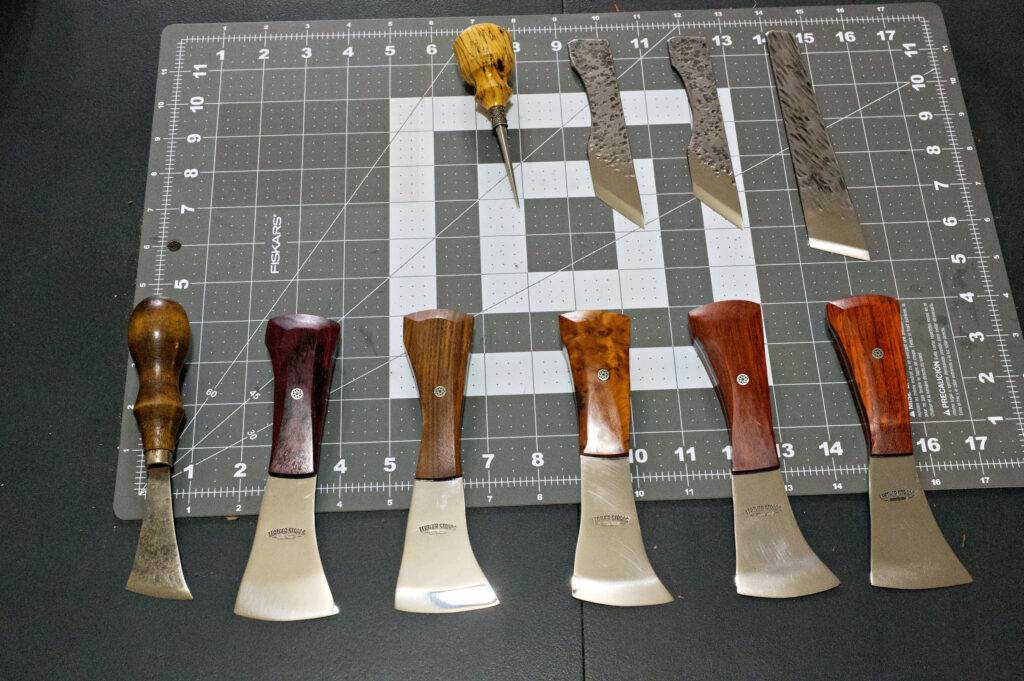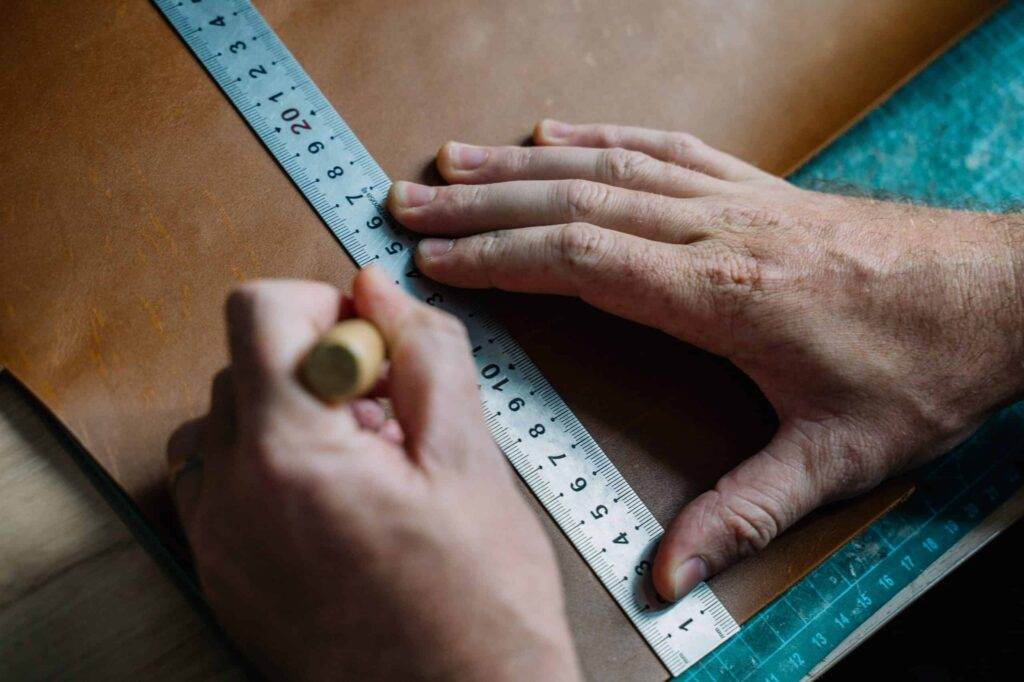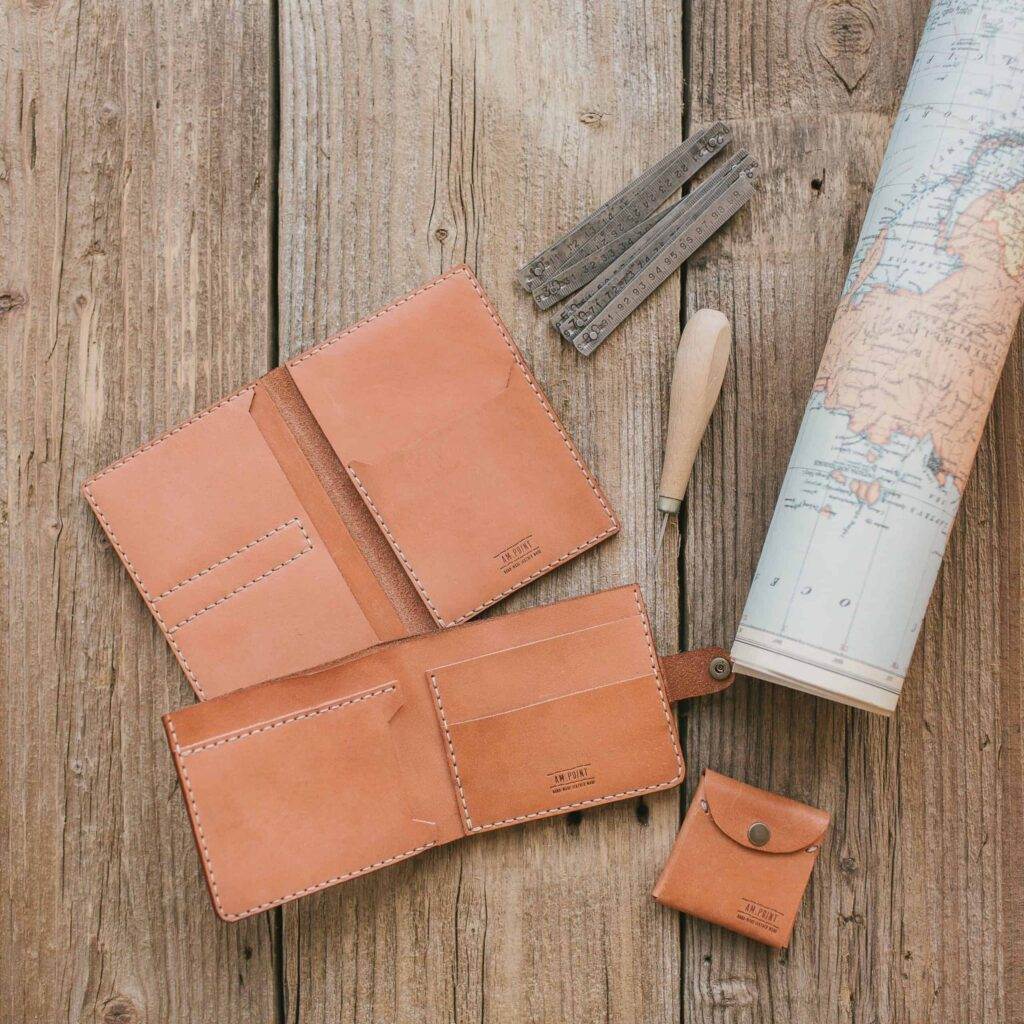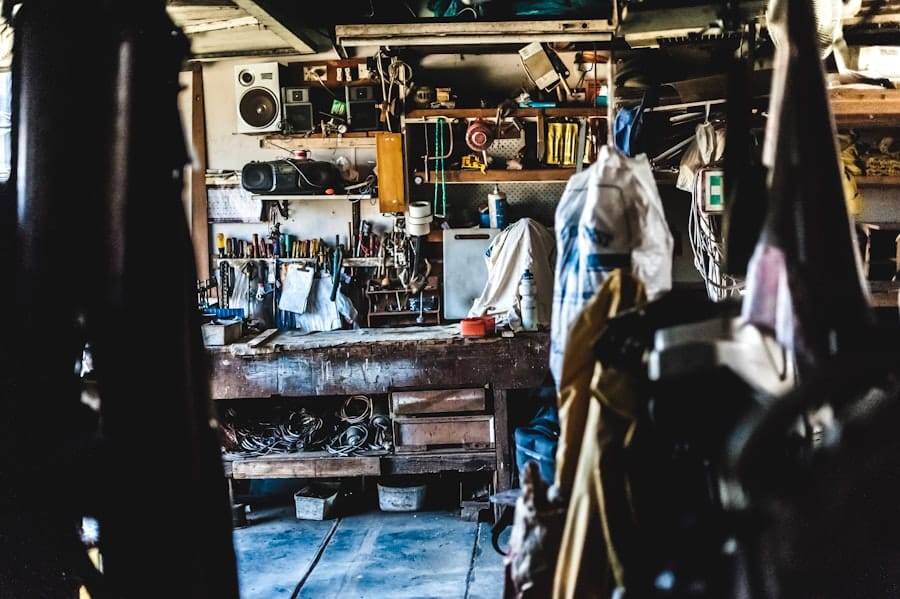Understanding Leather Grain Direction for Leathercraft Cutting
Leather is a versatile and durable material that has been used for centuries in various applications, from clothing to furniture. One of the fundamental aspects of working with leather is understanding its grain direction. The grain refers to the natural texture and pattern of the leather, which is determined by the animal’s skin structure.
This grain can vary significantly between different types of leather, and it plays a crucial role in how the material behaves during cutting, stitching, and finishing processes. Recognizing the grain direction is essential for achieving optimal results in any leathercraft project. The grain direction can be categorized into two main types: the top grain and the split grain.
Top grain leather retains the natural surface of the hide, showcasing its unique characteristics, while split grain leather is derived from the lower layers of the hide and often has a different texture. Understanding these distinctions is vital for artisans and hobbyists alike, as it influences not only the aesthetic appeal of the finished product but also its durability and functionality. In this article, we will explore the importance of leather grain direction, how to identify it, and its impact on cutting techniques in leathercraft.
Key Takeaways
- Understanding leather grain direction is crucial for successful leathercraft projects
- Identifying leather grain direction can be done by observing the natural wrinkles and patterns on the leather surface
- Leather grain direction significantly impacts the outcome of leathercraft cutting, affecting the strength and appearance of the final product
- Techniques for cutting leather with the grain direction include using a sharp knife and cutting in the same direction as the grain
- Cutting leather against the grain direction can result in weaker and less visually appealing leathercraft projects

Importance of Understanding Leather Grain Direction
Understanding leather grain direction is paramount for anyone involved in leathercraft. The grain affects how the leather will respond to various treatments, including dyeing, finishing, and stitching. When working with leather, recognizing the grain direction can help artisans make informed decisions about how to cut and manipulate the material.
Cutting with the grain can enhance the strength and longevity of the final product, while cutting against it may lead to fraying or tearing over time. Moreover, the aesthetic qualities of leather are closely tied to its grain direction. The way light interacts with the surface can change dramatically depending on whether one is working with the grain or against it.
For instance, when creating items like wallets or bags, maintaining a consistent grain direction can result in a more polished and professional appearance. Therefore, understanding leather grain direction is not just a technical consideration; it is also an artistic one that can elevate the quality of leathercraft projects.
Identifying Leather Grain Direction
Identifying the grain direction of leather is a skill that can be developed with practice. One of the simplest methods to determine grain direction is to observe the texture of the leather closely. The grain will typically have a more pronounced texture on one side, which is often referred to as the “right side” or “face” of the leather.
Conversely, the opposite side, known as the “flesh side,” will appear smoother and less textured. By running your fingers over both sides, you can feel the difference in texture, which can help you identify the grain direction. Another effective technique for identifying grain direction involves examining how the leather reacts to bending or stretching.
When you bend a piece of leather along its grain, it will flex more easily and smoothly compared to bending it against the grain. This characteristic can be particularly useful when working with larger pieces of leather or when planning cuts for specific projects. Additionally, some leathers may have visible markings or patterns that indicate their natural grain flow, providing further clues for artisans to follow.
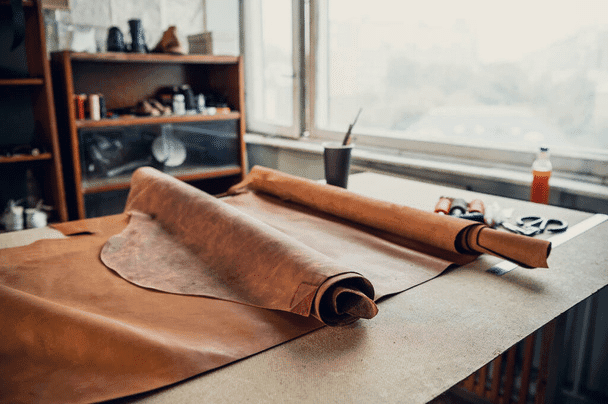
Impact of Leather Grain Direction on Leathercraft Cutting
The impact of leather grain direction on cutting cannot be overstated. When cutting leather, following the grain direction can significantly affect both the structural integrity and appearance of the finished piece. Cutting with the grain allows for cleaner edges and reduces the likelihood of fraying or splitting.
This is especially important for items that will experience regular wear and tear, such as belts or bags. Conversely, cutting against the grain can lead to uneven edges and a less polished look. Furthermore, understanding how grain direction affects cutting can also influence design choices.
For example, if an artisan wants to create intricate shapes or patterns in their leatherwork, they must consider how those cuts will interact with the grain. Certain designs may require strategic planning to ensure that they are cut in a way that maintains both strength and aesthetics. By taking into account the impact of grain direction on cutting techniques, artisans can create more durable and visually appealing products.
Techniques for Cutting Leather with the Grain Direction
When it comes to cutting leather with the grain direction, there are several techniques that can enhance precision and efficiency. One effective method is to use a sharp utility knife or rotary cutter specifically designed for leatherwork. These tools allow for clean cuts that follow the natural flow of the grain, minimizing any potential damage to the material.
It’s essential to maintain a steady hand and apply even pressure while cutting to achieve smooth edges. Another technique involves using a straightedge or ruler as a guide when making cuts. By aligning your cutting tool with a straightedge, you can ensure that your cuts remain straight and true to the desired shape.
This method is particularly useful for larger pieces of leather where maintaining accuracy is crucial. Additionally, marking your cutting lines lightly with a pencil or chalk can help guide your cuts without leaving permanent marks on the finished product.
Common Mistakes in Cutting Leather Against the Grain Direction
Cutting leather against the grain direction is a common mistake that many beginners make, often leading to disappointing results. One significant issue that arises from this practice is fraying along the edges of the cut. When leather is cut against its natural grain, it tends to unravel more easily, resulting in an unkempt appearance that detracts from the overall quality of the project.
This fraying can be particularly problematic for items that require precise edges or will be subjected to stress during use. Another mistake associated with cutting against the grain is reduced durability. Leather cut against its natural flow may be more prone to tearing or splitting over time, especially in high-stress areas such as seams or corners.
This not only compromises the integrity of the item but also necessitates repairs or replacements sooner than anticipated. To avoid these pitfalls, it’s crucial for artisans to take time to understand and respect the natural grain direction of their materials before making any cuts.
Utilizing Leather Grain Direction for Different Leathercraft Projects

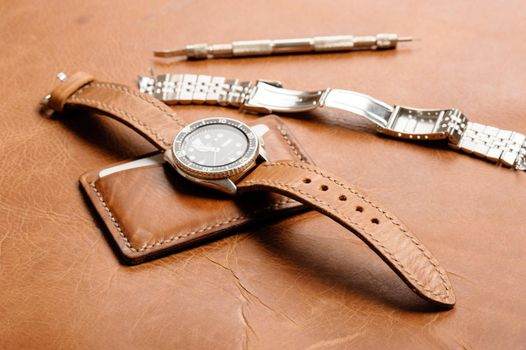
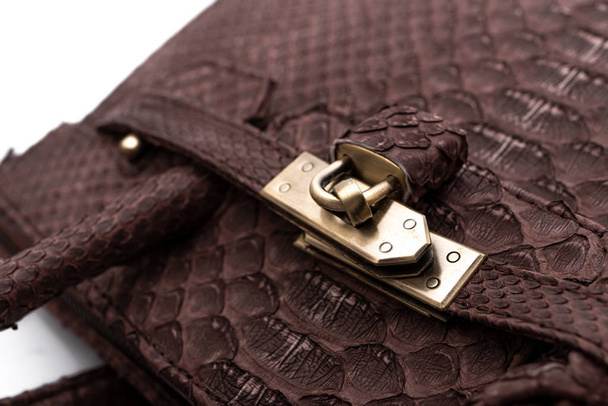
Utilizing leather grain direction effectively can enhance various leathercraft projects in numerous ways. For instance, when creating bags or wallets, artisans can strategically plan their cuts to ensure that high-wear areas are aligned with the grain for maximum durability. This attention to detail not only improves functionality but also contributes to a more polished appearance in finished products.
In addition to functional considerations, understanding grain direction can also inspire creative design choices. For example, artisans may choose to incorporate contrasting textures by combining pieces cut with different grain orientations within a single project. This approach can add visual interest and depth to items such as belts or decorative accessories.
By leveraging their knowledge of leather grain direction, crafters can push their creative boundaries while ensuring that their projects remain strong and aesthetically pleasing.
Conclusion and Final Tips for Leathercraft Cutting with Grain Direction
In conclusion, understanding leather grain direction is an essential skill for anyone involved in leathercraft. It influences not only how materials should be cut but also how they will perform over time in various applications. By recognizing and respecting this natural characteristic of leather, artisans can create products that are both beautiful and durable.
As you embark on your leathercraft journey, remember these final tips: always take time to identify the grain direction before making any cuts; use sharp tools for clean edges; and consider how your design choices align with the natural flow of the material. With practice and attention to detail, you will find that mastering leather grain direction will significantly enhance your craftsmanship and lead to more successful projects in your leatherworking endeavors.
FAQs
What is leather grain direction?
Leather grain direction refers to the natural pattern of the fibers in a piece of leather. It is important to understand the grain direction when working with leather as it affects the strength, durability, and appearance of the finished product.
How can you determine the grain direction of leather?
To determine the grain direction of leather, you can look for natural markings, wrinkles, or pores on the surface of the leather. These markings typically run parallel to the grain, which can help you identify the direction of the grain.
Why is it important to consider leather grain direction when cutting leather for leathercraft?
Considering the leather grain direction when cutting leather for leathercraft is important because it affects the way the leather stretches, bends, and ages. Cutting leather with the grain will result in a more durable and aesthetically pleasing finished product.
What are the different types of leather grain direction?
There are three main types of leather grain direction: full grain, top grain, and split grain. Full grain leather has the most natural grain pattern, while top grain leather has been sanded or buffed to remove imperfections. Split grain leather is taken from the lower layers of the hide and has a more uniform appearance.
How does leather grain direction affect the quality of leathercraft projects?
The leather grain direction affects the quality of leathercraft projects by influencing the strength, flexibility, and appearance of the finished product. Cutting leather with the grain direction in mind can result in a more professional and long-lasting leathercraft project.


